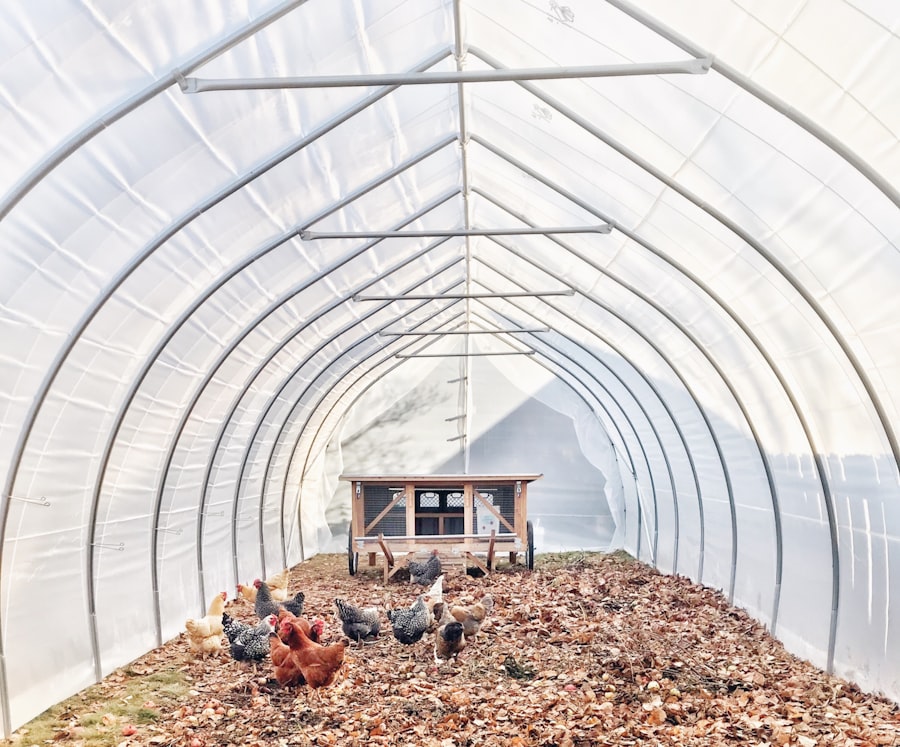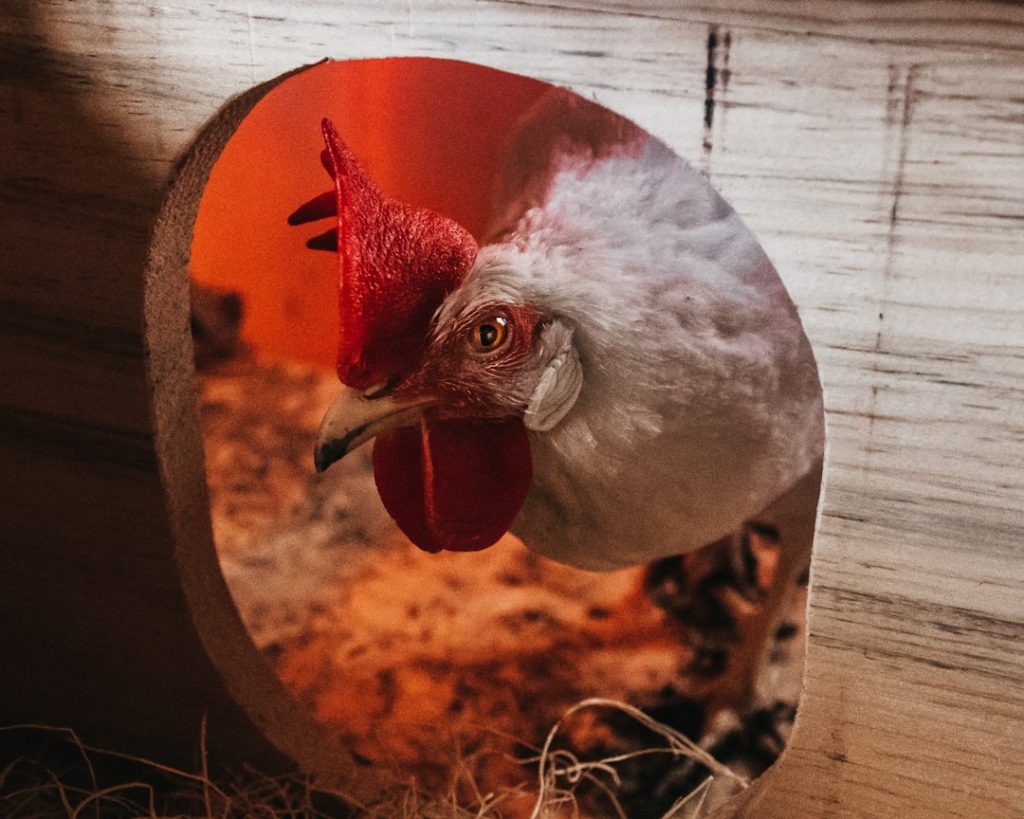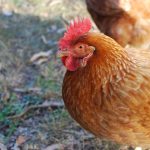Weasels are small, carnivorous mammals characterized by their slender bodies and agile movements. These skilled hunters are opportunistic feeders and possess the ability to squeeze through small openings, making them a significant threat to chickens in coops. Primarily nocturnal, weasels are most active at night, which can make detection challenging during daylight hours.
Their speed and agility further complicate efforts to capture them once they have targeted a chicken coop. Understanding weasel behavior is essential for developing effective protection strategies for chickens. Weasels are persistent predators and will repeatedly target a coop if they have found it to be a reliable food source.
Their territorial nature means they may establish a specific area as their hunting ground and return frequently. Weasels are also adept climbers and diggers, necessitating the securing of all potential entry points in a chicken coop. By comprehending these behavioral traits, chicken owners can better prepare and implement measures to safeguard their flocks from these cunning predators.
Table of Contents
Key Takeaways
- Weasels are small, agile predators known for their ability to squeeze through small openings and climb fences to access chicken coops.
- Securing the chicken coop with sturdy materials and ensuring all openings are sealed can help prevent weasel attacks.
- Using deterrents such as motion-activated lights, sound machines, or predator urine can help keep weasels away from the chicken coop.
- Implementing traps specifically designed for catching weasels can be an effective way to control their population around the chicken coop.
- Keeping the surrounding area clean by removing any potential food sources or hiding spots can help discourage weasels from frequenting the area.
- Regularly monitoring the chicken coop for signs of weasel activity, such as tracks or missing chickens, can help address any issues before they escalate.
- Seeking professional help from a wildlife control expert may be necessary if weasel infestations persist despite efforts to deter or trap them.
Securing the Chicken Coop
Inspecting the Coop for Entry Points
Weasels are known for their ability to squeeze through small openings, so it is important to inspect the coop for any potential entry points. This includes checking for gaps in the walls, floors, and roof, as well as ensuring that all doors and windows are securely closed at night.
Using Strong Materials and Deterrents
It is also important to use strong and durable materials when building or repairing the coop to prevent weasels from breaking in. Additionally, adding a layer of wire mesh around the coop can help deter weasels from attempting to enter.
Maintaining a Clear Surrounding Area
Another important aspect of securing the chicken coop is to ensure that the surrounding area is free from potential hiding spots for weasels. This includes removing any tall grass, brush, or debris that could provide cover for these predators. By keeping the area around the coop clear, it becomes more difficult for weasels to approach undetected. Securing the chicken coop is a crucial step in protecting the flock from weasel attacks and should be a top priority for all chicken owners.
Using Deterrents

Using deterrents can be an effective way to keep weasels away from a chicken coop. There are several methods that can be used as deterrents, including natural and artificial options. One natural deterrent is the use of predator urine, such as that of a fox or coyote, which can be applied around the perimeter of the coop to create a scent barrier that weasels will avoid.
Another natural deterrent is the use of strong-smelling plants, such as lavender or mint, which can be planted around the coop to repel weasels. Artificial deterrents can also be effective in keeping weasels away from a chicken coop. This includes the use of motion-activated lights or sound devices that can startle weasels and deter them from approaching the coop.
Additionally, installing an electric fence around the perimeter of the coop can provide a strong deterrent for weasels and other predators. Using deterrents is an important part of protecting a chicken coop from weasel attacks and can be an effective way to keep the flock safe.
Implementing Traps
Implementing traps can be an effective way to catch weasels that are targeting a chicken coop. There are several types of traps that can be used, including live traps and lethal traps. Live traps are designed to capture weasels without harming them, allowing them to be released back into the wild away from the coop.
Lethal traps, on the other hand, are designed to kill weasels upon capture and should be used with caution and in accordance with local laws and regulations. When implementing traps, it is important to place them in areas where weasels are likely to travel, such as near potential entry points or along known pathways. Baiting traps with food that weasels find attractive, such as eggs or meat, can increase their effectiveness.
It is also important to check traps regularly to ensure that any captured weasels are dealt with quickly and humanely. Implementing traps can be an effective way to control weasel populations around a chicken coop and protect the flock from potential attacks.
Keeping the Surrounding Area Clean
Keeping the surrounding area clean is an important aspect of protecting a chicken coop from weasel attacks. Weasels are known to be attracted to areas with abundant food sources and potential hiding spots, so it is important to keep the area around the coop free from debris and clutter. This includes removing any fallen fruit, spilled feed, or other food sources that could attract weasels.
It is also important to keep the area free from tall grass, brush, or other vegetation that could provide cover for these predators. Regularly cleaning and maintaining the area around the coop can help reduce the likelihood of weasel attacks and make it easier to spot any potential threats. By keeping the surrounding area clean, chicken owners can create a less attractive environment for weasels and reduce the risk of their flock being targeted.
Monitoring the Chicken Coop

Regular Coop Inspections
Monitoring the chicken coop is an important part of protecting the flock from weasel attacks. This includes regularly checking for signs of weasel activity, such as tracks, droppings, or evidence of attempted entry into the coop. It is also important to inspect the coop for any potential entry points or damage that could allow weasels to gain access.
Staying Ahead of Potential Threats
By monitoring the coop regularly, chicken owners can stay ahead of potential threats and take action to protect their flock. In addition to physical monitoring, using technology such as security cameras or motion-activated sensors can provide an extra layer of protection for a chicken coop. These tools can help alert chicken owners to potential threats and provide valuable information about weasel activity around the coop.
Essential Protection Measures
Monitoring the chicken coop is an essential part of protecting the flock from weasel attacks and should be done regularly to ensure their safety.
Seeking Professional Help
In some cases, seeking professional help may be necessary to effectively protect a chicken coop from weasel attacks. This can include hiring a wildlife removal service or consulting with a pest control expert who has experience dealing with weasels. These professionals can provide valuable insight and expertise in developing strategies to protect the flock from weasel attacks.
Professional help may also be necessary if weasel populations are particularly high in a specific area or if other methods of control have been ineffective. Wildlife removal services can safely and humanely remove weasels from the vicinity of a chicken coop, reducing the risk of future attacks. Consulting with a pest control expert can also provide valuable information about effective deterrents and traps that can be used to protect the flock.
In conclusion, protecting a chicken coop from weasel attacks requires a combination of understanding their behavior, securing the coop, using deterrents, implementing traps, keeping the surrounding area clean, monitoring the coop regularly, and seeking professional help when necessary. By taking these steps, chicken owners can effectively protect their flock from these cunning predators and ensure their safety and well-being.
If you’re looking for ways to protect your chickens from predators like weasels, you may also be interested in learning about how to insulate a chicken coop to keep your birds safe and comfortable during the colder months. Check out this helpful article on how to insulate a chicken coop for some valuable tips and advice.
FAQs
What is a weasel?
A weasel is a small, carnivorous mammal that is known for its slender body and long, flexible neck. They are skilled hunters and are known to prey on small animals such as mice, rabbits, and birds.
Why do weasels kill chickens?
Weasels are natural predators and are known to hunt and kill small animals for food. Chickens are often easy targets for weasels due to their size and the fact that they are kept in enclosed spaces such as coops, making them vulnerable to attacks.
How can I keep weasels away from my chickens?
To keep weasels away from your chickens, it is important to secure the chicken coop with strong wire mesh and ensure that there are no gaps or openings that weasels can squeeze through. Additionally, installing motion-activated lights or sound devices can help deter weasels from approaching the coop.
Are there any natural deterrents for weasels?
Some natural deterrents for weasels include planting strong-smelling herbs such as mint, lavender, or rosemary around the chicken coop. These scents can help repel weasels and discourage them from approaching the area.
What should I do if I suspect a weasel is targeting my chickens?
If you suspect that a weasel is targeting your chickens, it is important to take immediate action to protect your flock. This may include reinforcing the coop, setting traps, or contacting a professional pest control service for assistance.
Meet Walter, the feathered-friend fanatic of Florida! Nestled in the sunshine state, Walter struts through life with his feathered companions, clucking his way to happiness. With a coop that’s fancier than a five-star hotel, he’s the Don Juan of the chicken world. When he’s not teaching his hens to do the cha-cha, you’ll find him in a heated debate with his prized rooster, Sir Clucks-a-Lot. Walter’s poultry passion is no yolk; he’s the sunny-side-up guy you never knew you needed in your flock of friends!







